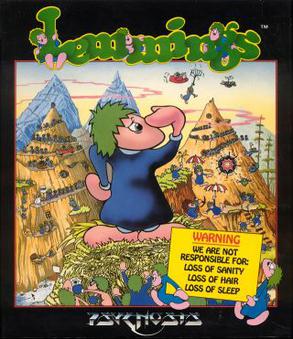
Lemmings is a puzzle-strategy video game originally developed by DMA Design and published by Psygnosis for the Amiga in 1991 and later ported for numerous other platforms. The game was programmed by Russell Kay, Mike Dailly and David Jones, and was inspired by a simple animation that Dailly created while experimenting with Deluxe Paint.

Bloodwych is a dungeon role-playing video game, a dungeon crawler, developed for the Amiga, Atari ST, MS-DOS, Amstrad CPC, Commodore 64, and ZX Spectrum. Its box featured artwork by Chris Achilleos. The plotline identifies the player as a champion of Trazere who, after recruiting up to three fellow champions, travels through dungeons and mazes fighting creatures along the way to find and destroy the evil Zendick, and banish the Lord of Entropy.

Shadow of the Beast is a platform game developed by Reflections and published by Psygnosis in 1989. The original version was released for the Amiga, and was later ported to many other systems. The game was known for its graphics, with many colours on screen and up to twelve levels of parallax scrolling backdrops, and for its atmospheric score composed by David Whittaker that used high-quality instrument samples.
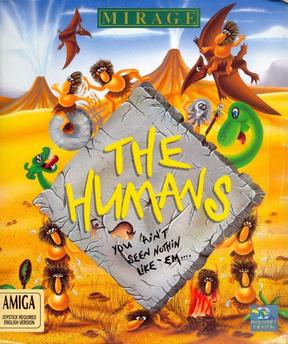
The Humans is a puzzle-platform video game developed by Imagitec Design in Dewsbury, England and originally published by Mirage Technologies for the Amiga in May 1992. It was later ported to other home computers and consoles. The goal of the game varies per level but usually revolves around bringing at least one of the player-controlled humans to the designated end area marked by a colored tile. Doing this requires players taking advantage of the tribe's ability to build a human ladder and use tools such as spears, torches, wheels, ropes and a witch doctor in later levels.

Walker is a horizontally scrolling shooter video game developed by DMA Design and published by Psygnosis for the Amiga in February 1993. The player controls a bipedal mech and is tasked with killing advancing enemies in stages set in multiple time periods. Development of the game began after the release of Blood Money, but was scrapped in 1990 because the game was not coming together. By the end of the year, development had recommenced with a redesign, inspired by sprites originally intended for Blood Money. Ian Dunlop and Neill Glancy designed the game, and Raymond Usher wrote its soundtrack. The game was released to positive reviews with praise directed at the game's graphics and sound, but reviewers were critical towards the repetitiveness of the gameplay. Amiga Power ranked it among their top 100 Amiga games of 1993.
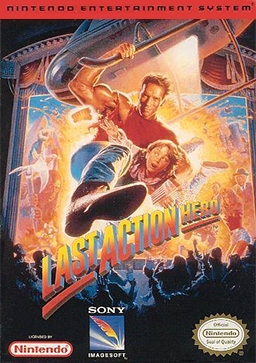
Last Action Hero is a series of action video games based on the 1993 film of the same name. Versions were released for the NES, Super NES, Sega Genesis, Game Boy, Game Gear, and MS-DOS. Versions were also planned for the Sega CD and Master System, but ultimately were not released.

Oh No! More Lemmings is an expansion pack for the puzzle video game Lemmings by DMA Design. It contains 100 single-player levels and six music tracks. The Amiga version also includes 10 two-player levels. The game requires either the install disk from the previous Lemmings, or, in a standalone version, the game manual, for use as a copy protector. The new levels are separated into five difficulty categories, each with 20 levels.
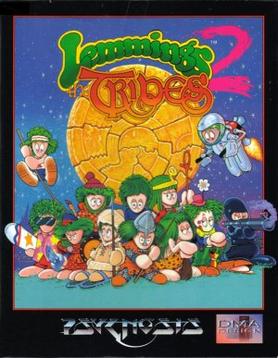
Lemmings 2: The Tribes is a 1993 puzzle strategy video game developed by DMA Design and published by Psygnosis, and is the sequel to the 1991 video game Lemmings. Similar to the original title, the game sees the player guiding various tribes of anthropomorphised lemmings through a number of levels, using various skills to help them reach the exit. Expanding on the mechanics of the original game, Lemmings 2 featured a more open-ended series of levels with different 'tribes', contained an overarching narrative, expanded the number of skills, simplified the requirements for clearing levels, and included a practice mode for players to test out new gameplay mechanics. Development of Lemmings 2 was more intensive, with Psygnosis having greater involvement in attempt to recreate the success of the original game. A focus on the production of the game was cross-development of a large number of ports, with the game released to consoles including the Mega Drive, Super NES and Game Boy. Lemmings 2 was a commercial success and received positive reviews from critics, with praise directed towards its additional gameplay mechanics and greater variety of levels and abilities.

All New World of Lemmings is a puzzle video game released in 1994, as the third game in the Lemmings series. In North America, the game was named The Lemmings Chronicles. It was published by Psygnosis and was the last Lemmings game developed by DMA Design.

Ork is a video game made for the Amiga and Atari ST personal computers. It was developed by WJS Design and published by Psygnosis in 1991.

3D Lemmings is a 1995 puzzle video game developed by Clockwork Games and published by Psygnosis. The gameplay, like the original Lemmings game, requires the player to lead all the lemmings to their exit by giving them the appropriate "skills". It was the first Lemmings game to be rendered in 3D. It was released for DOS, PlayStation, and Sega Saturn.

The Adventures of Lomax is a platforming video game created by Psygnosis in 1996 for the PlayStation and Microsoft Windows. It is a spin-off video game of the Lemmings series. The player takes the role of Lomax, a lemming knight who must save his fellow lemmings who have been brainwashed by the wicked sorcerer Evil Ed.

Putty is a game developed by System 3 and released in 1992 for the Amiga. It was also released on the Super Nintendo Entertainment System in 1993 as Super Putty and Amiga CD32 version was published in 1994 under the same name.

Leander is a video game for the Amiga developed by Traveller's Tales and published by Psygnosis in 1991. It was the first game developed by Traveller's Tales. The game was developed on the Amiga, then converted to the Atari ST by Philipp Wyatt for W.J.S Design. A year later it was published for the Sega Genesis as Galahad by Electronic Arts.
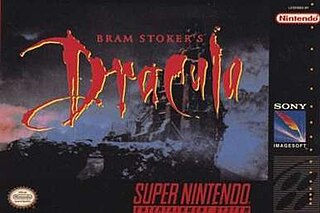
Bram Stoker's Dracula is a 1993 video game released for the Mega Drive/Genesis, Nintendo Entertainment System, Super NES, Game Boy, Master System, Sega CD, Game Gear, MS-DOS, and Amiga. It is based on the 1992 film Bram Stoker's Dracula which in turn is based on the 1897 novel Dracula by Bram Stoker. Most versions are platform games. The Sega CD and Amiga releases are beat 'em ups, and the MS-DOS version is a first-person shooter. The Amiga version was released in 1994 for North America and Europe. A CD-ROM version for MS-DOS compatible operating systems was released in 1995.
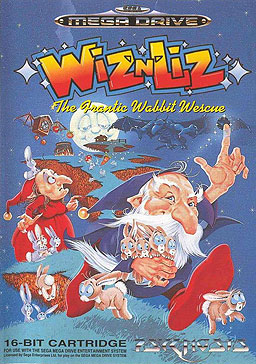
Wiz 'n' Liz: The Frantic Wabbit Wescue is a platform game developed by Raising Hell Software for the Sega Mega Drive and published by Psygnosis in 1993. An Amiga port was developed by Lunatic Software. It is a humorous, cutesy platform game. With the exception of some end-of-level bosses, the game contains no enemies.

Awesome is a science fiction action video game released by Psygnosis for the Amiga in 1990. It features a variety of gameplay styles, from overhead shooting to Asteroids-esque sequences, and a pre-rendered ray-traced intro. The objective is to traverse the galaxy despite not having the funds or fuel to do it.

Puggsy is a 1993 puzzle-platform game developed by Traveller's Tales and released by Psygnosis on the Mega Drive and Mega-CD consoles, as well as the Amiga home computer. Puggsy is the name of the title character, an orange space hopper–like alien who landed his spaceship on The Planet, intending to return home until his spaceship was stolen by the raccoon natives of the planet.

Land of Illusion Starring Mickey Mouse, released in Japan as Mickey Mouse no Mahō no Crystal (ミッキーマウスの魔法のクリスタル) and in Brazil as Land of Illusion Estrelando Mickey Mouse, is a platform game developed and published by Sega for the Master System and Game Gear.
Ultracore is a run and gun video game developed by DICE. Originally due to be released for Amiga, Genesis, and Sega CD platforms, the game was canceled by its publisher, Psygnosis, in 1994 after it had been almost finished. The game was salvaged by publisher Strictly Limited Games and released together with the Mega Sg aftermarket console in March 2019. Ports for Nintendo Switch, PlayStation 4, and PlayStation Vita were released in 2020. A version compatible with original Sega Genesis systems was released in Japan in October 2019. Ports for Xbox One and Xbox Series X/S were released in December 2023.




















